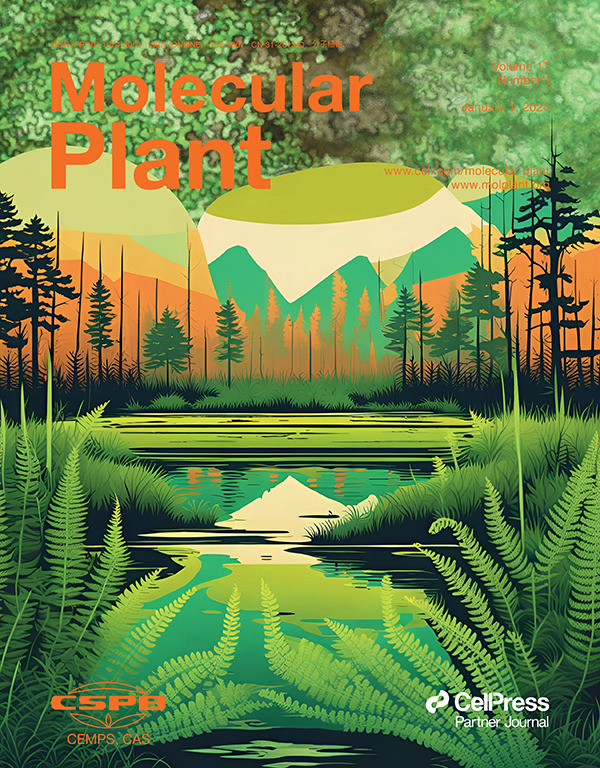一个发育开关通过果胶连接的胞间连丝改变控制根中细胞间的运输
IF 24.1
1区 生物学
Q1 BIOCHEMISTRY & MOLECULAR BIOLOGY
引用次数: 0
摘要
细胞间的通讯是多细胞生命的基础。在植物中,胞间连丝——细胞质通道——使相邻细胞之间的分子运输成为可能。在根中,这种运输被预测在组成根的多个细胞层的营养获取和传递中发挥核心作用。在这项研究中,我们证明了在完全分化的根中,尽管在内胚层中形成了Casparian条和木质素片层等外胞质屏障,胞间连丝运输仍然存在。这种持续性强调了间连丝是成熟根细胞间运输的关键途径。我们还发现了胞间连丝功能的发育开关:虽然在幼根中运输是双向的,但在分化根中,它向脉管系统转变为单向的。通过基因筛选,我们发现了方向性中断的突变体,表现出持续的双向运输。这些突变体显示出由果胶组成和细胞壁组织缺陷引起的间连丝孔径增大,突出了果胶在间连丝形成和功能中的关键作用。我们的研究结果揭示了根发育过程中胞间连丝介导的运输是如何被动态调节的,并为植物细胞间通讯的细胞机制提供了新的见解。本文章由计算机程序翻译,如有差异,请以英文原文为准。
A developmental switch controls cell-to-cell transport in roots via pectin-linked plasmodesmata changes
Cell-to-cell communication is fundamental to multicellular life. In plants, plasmodesmata - cytoplasmic channels - enable molecular transport between adjacent cells. In roots, this transport is predicted to play a central role in nutrient acquisition and delivery across the multiple cell layers that compose the root. In this study, we demonstrate that plasmodesmatal transport persists in fully differentiated roots, despite the formation of apoplastic barriers such as Casparian strips and suberin lamellae in the endodermis. This persistence highlights plasmodesmata as a critical pathway for intercellular transport in mature roots. We also uncovered a developmental switch in plasmodesmata function: while transport is bidirectional in young roots, it becomes unidirectional towards the vasculature in differentiated roots. Through a genetic screen, we identified mutants with disrupted directionality, exhibiting persistent bidirectional transport. These mutants showed enlarged plasmodesmata apertures caused by defects in pectin composition and cell wall organization, highlighting the critical role of pectin in plasmodesmata formation and function. Our findings reveal how plasmodesmata-mediated transport is dynamically regulated during root development and provide new insights into the cellular mechanisms that govern intercellular communication in plants.
求助全文
通过发布文献求助,成功后即可免费获取论文全文。
去求助
来源期刊

Molecular Plant
植物科学-生化与分子生物学
CiteScore
37.60
自引率
2.20%
发文量
1784
审稿时长
1 months
期刊介绍:
Molecular Plant is dedicated to serving the plant science community by publishing novel and exciting findings with high significance in plant biology. The journal focuses broadly on cellular biology, physiology, biochemistry, molecular biology, genetics, development, plant-microbe interaction, genomics, bioinformatics, and molecular evolution.
Molecular Plant publishes original research articles, reviews, Correspondence, and Spotlights on the most important developments in plant biology.
 求助内容:
求助内容: 应助结果提醒方式:
应助结果提醒方式:


